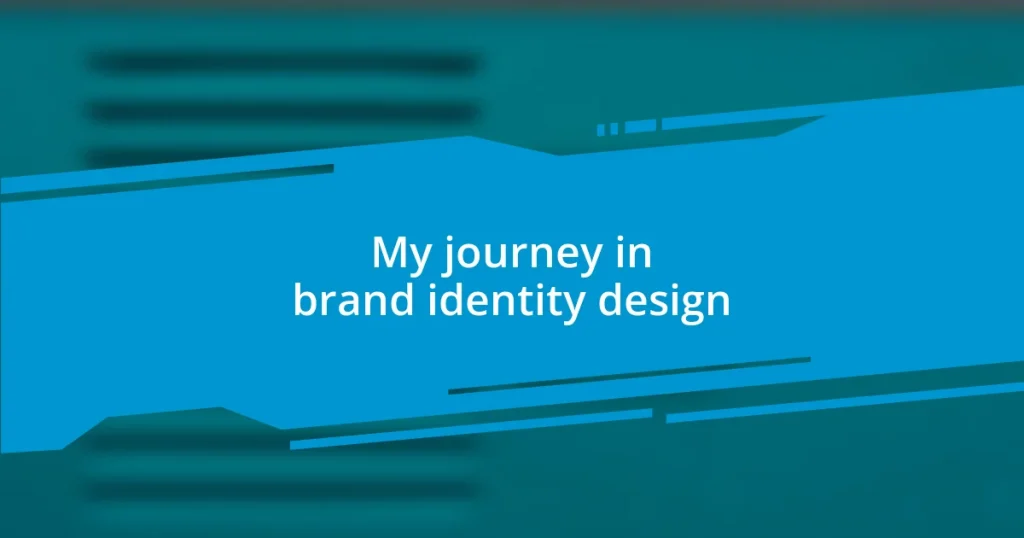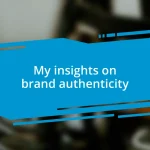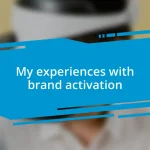Key takeaways:
- Brand identity design is a narrative that reflects a brand’s personality and values, fostering emotional connections with the audience.
- Building a structured design process, including thorough research and feedback loops, enhances creativity and guides successful outcomes in projects.
- Empathy and openness to feedback are crucial for growth, allowing designers to align their work with client visions and create impactful designs.
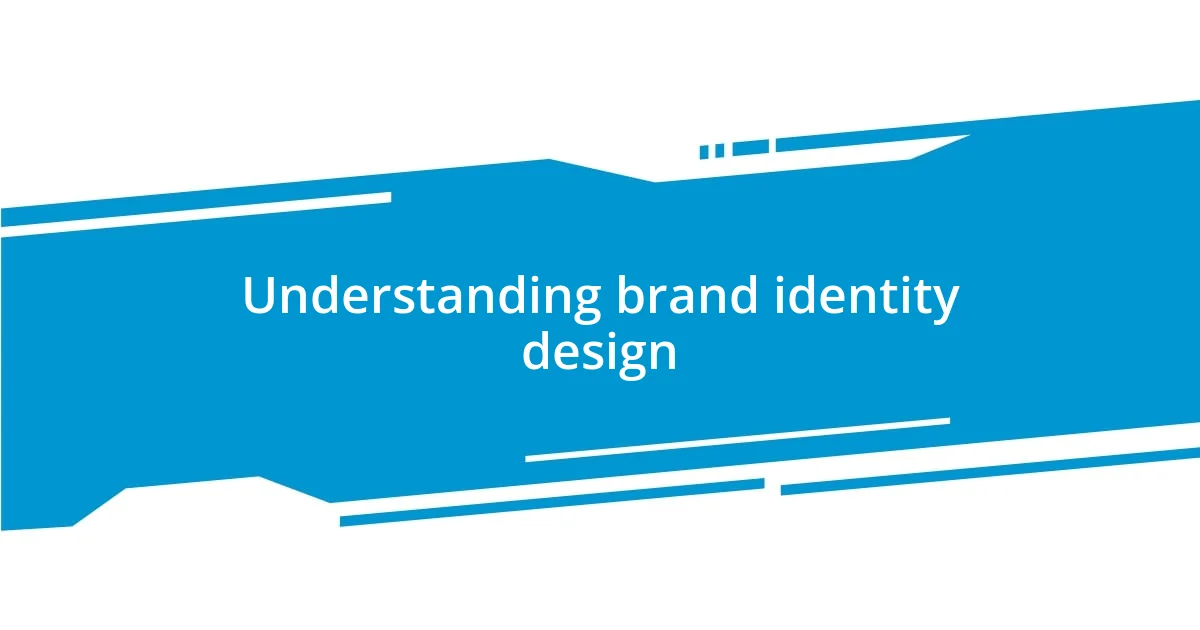
Understanding brand identity design
Brand identity design is more than just a visual aesthetic; it’s the essence of a brand’s personality and values. I remember working on a project for a new startup where my goal was to encapsulate their innovative spirit. Every design choice—from the color palette to the typography—became a reflection of the passion and uniqueness they wanted to convey. Have you ever thought about how a simple logo can evoke feelings or memories?
When I dive into brand identity, I see it as a narrative waiting to be told. Each element, like a brand’s logo or a tagline, plays a part in weaving that story. For instance, I once collaborated with a nonprofit focused on environmental conservation, and we chose earthy tones and organic shapes to reflect their mission. This experience was a powerful reminder that design can not only attract attention but also build an emotional connection with the audience.
It’s interesting how brand identity design goes beyond visual elements. It’s also about fostering trust and recognition over time. I’ve often found that clients become emotionally tied to their brand’s visual identity. Have you experienced that connection between a brand and its audience? Understanding this dynamic can significantly influence how a brand evolves and communicates in a crowded marketplace.
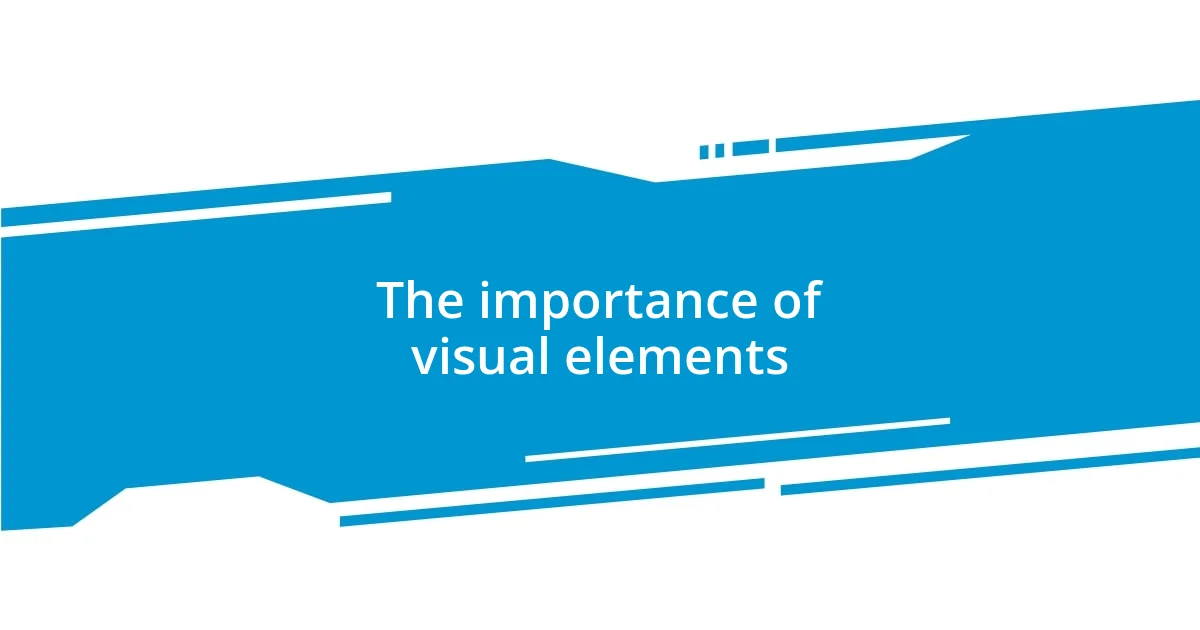
The importance of visual elements
Visual elements are the backbone of brand identity design. They create immediate recognition and set the tone for how a brand is perceived. I remember when I redesigned a logo for a well-established café. By simply updating their color scheme to a vibrant palette, I watched their customer engagement soar. It was astonishing to see how a fresh visual approach revitalized their old perception among long-time patrons and attracted a new, younger audience.
- Color: It determines the emotional response and influences behavior.
- Typography: The right font conveys a brand’s personality—formal, playful, modern, or classic.
- Imagery: Visuals can evoke nostalgia or familiarity, grounding the audience in the brand’s narrative.
- Consistency: A cohesive visual identity fosters trust and reliability, making it easier for customers to connect with the brand.
These elements don’t just decorate a brand; they tell its story and invite people in. I’ve always believed that every design decision has the power to evoke emotion and response—the right visuals can resonate deeply and create lasting impressions.
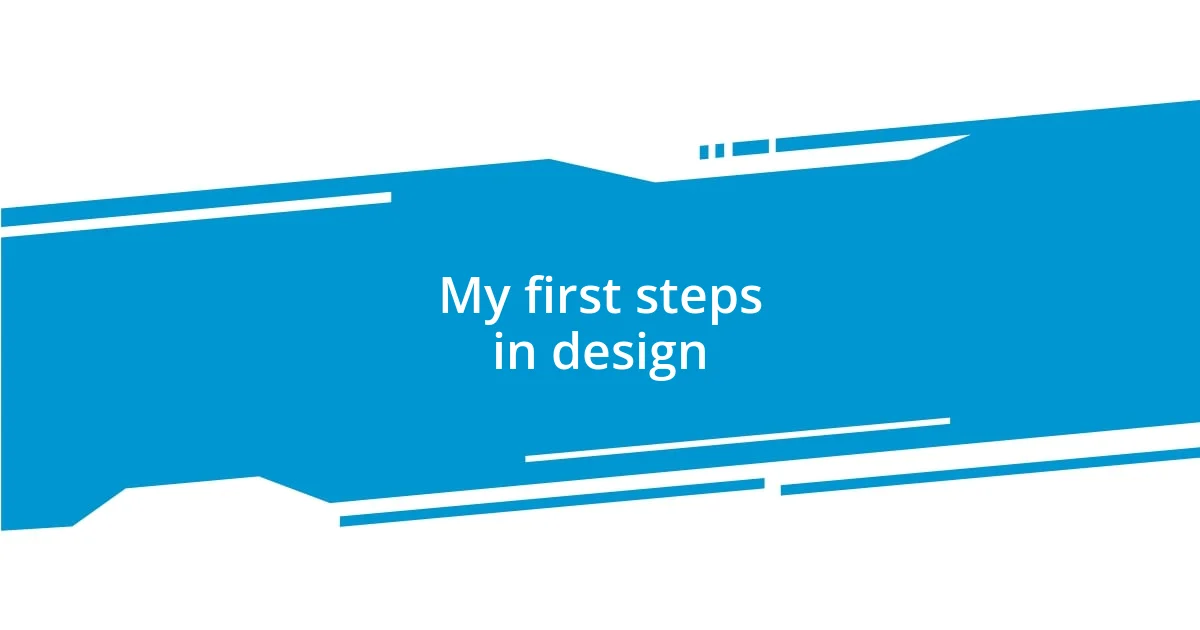
My first steps in design
When I first dipped my toes into design, I remember feeling a mix of excitement and uncertainty. My early projects consisted of simple assignments, like creating flyers for local events. I was constantly experimenting, learning the intricacies of color combinations and layouts that appealed to my friends and peers. Isn’t it amazing how simple experimentation can yield surprising results and growth?
One of my first significant experiences was designing an identity for a small community theater. I felt like I was crafting a visual heartbeat for something truly special. Each meeting brought a rush of inspiration, as we discussed how to reflect the theater’s spirit. When I presented the logo—a dynamic blend of colors mimicking the vibrancy of stage lights—I was thrilled to witness the team’s enthusiastic response. It felt like the design had truly captured their essence.
Reflecting on those early days, I recognize how crucial that foundation was to my evolution as a designer. The challenges I faced taught me resilience. I clearly recall nights spent refining my work, driven by the desire to create something meaningful. That relentless pursuit of improvement remains a cornerstone of my journey, shaping not only my approach to design but my identity as a creator.
| Step | Experience |
|---|---|
| First Project | Creating flyers for local events |
| Significant Project | Designing identity for a community theater |
| Learning Outcome | Emphasis on experimentation and resilience in design |
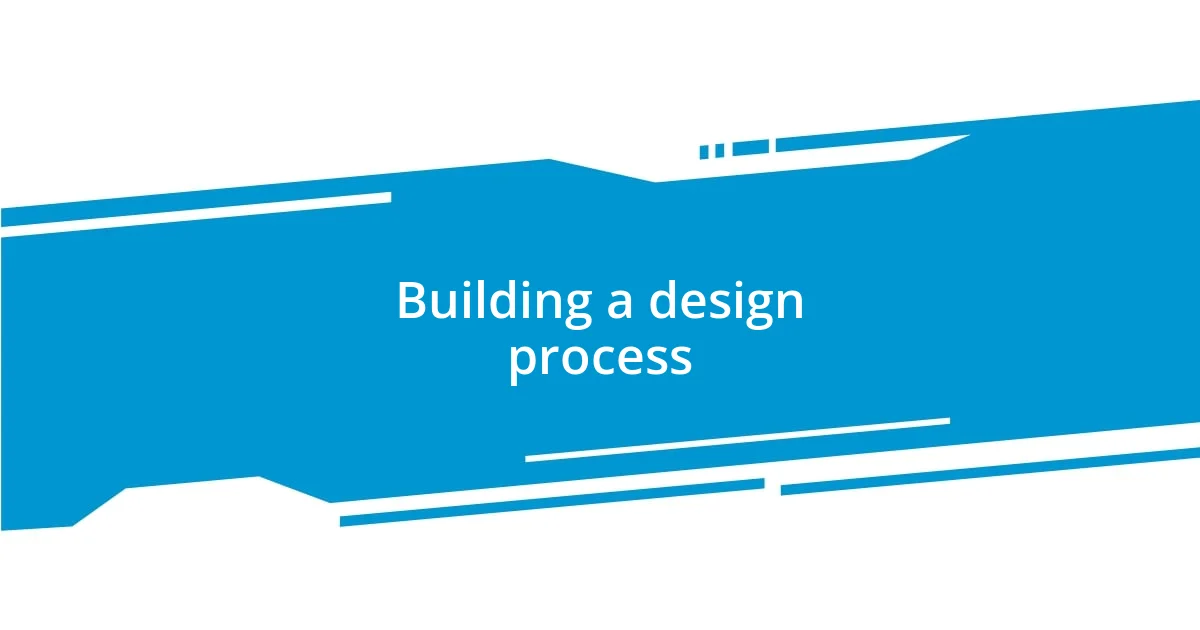
Building a design process
Building a structured design process has been a revelation in my journey as a brand identity designer. Initially, my approach was somewhat instinctual; I relied heavily on trial and error. It wasn’t until I organized my workflow into distinct phases—from research and ideation to execution and feedback—that I truly began to see the value of a methodical process. Have you ever noticed how clarity in a chaotic field often emerges through structure?
For me, conducting thorough research is the bedrock of any design project. I remember working on a branding project for a local bakery, where I dove deep into the history of their recipes and the community’s connection to them. This research phase revealed fascinating stories that inspired my designs and allowed me to create a visual identity that deeply resonated with their loyal customers. Isn’t it incredible how rich stories can transform the design narrative?
Lastly, the feedback loop is paramount in refining design choices. Early in my career, I sometimes hesitated to share my work, fearing rejection. However, I learned that constructive criticism is a powerful tool. I vividly recall a pivotal moment when a client’s feedback helped me pivot my designs in unexpected ways, ultimately leading to a successful launch. Embracing collaboration not only enhances the design but also fosters relationships built on trust and understanding. How has feedback transformed your approach in creative endeavors?
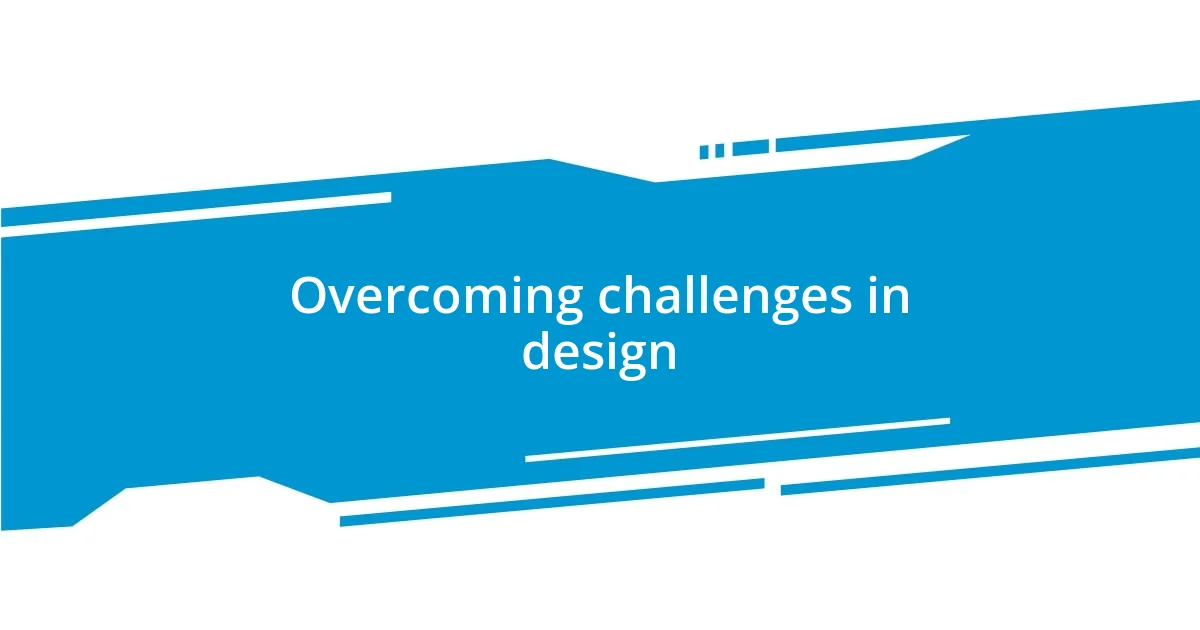
Overcoming challenges in design
Navigating the challenges in design has often felt like threading a needle in a storm. I vividly remember a project where a client’s vision clashed with my own creative instincts. Initially, I was resistant and stubborn, clinging to my ideas. But as I reflected on their feedback, I realized the importance of adaptability. It reminded me that being open to change can lead to unexpected brilliance in the final product.
One of the biggest hurdles was mastering the balance between creativity and client expectations. I faced a situation where I believed a bold design choice would elevate a brand. However, the client preferred a more conservative approach. Instead of viewing this as a setback, I focused on finding common ground—blending innovation with their vision. It was a testament to the power of compromise and a lesson in humility that has reshaped the way I approach projects.
Every setback I encountered taught me resilience. There were moments when a design didn’t land as I envisioned. For instance, I once poured weeks into a project that ultimately got scrapped. Instead of succumbing to frustration, I took a step back, analyzed what went wrong, and reflected on how I could grow. Those moments, while tough, have often ignited my passion to improve. Isn’t it fascinating how every challenge can be a stepping stone toward mastery?
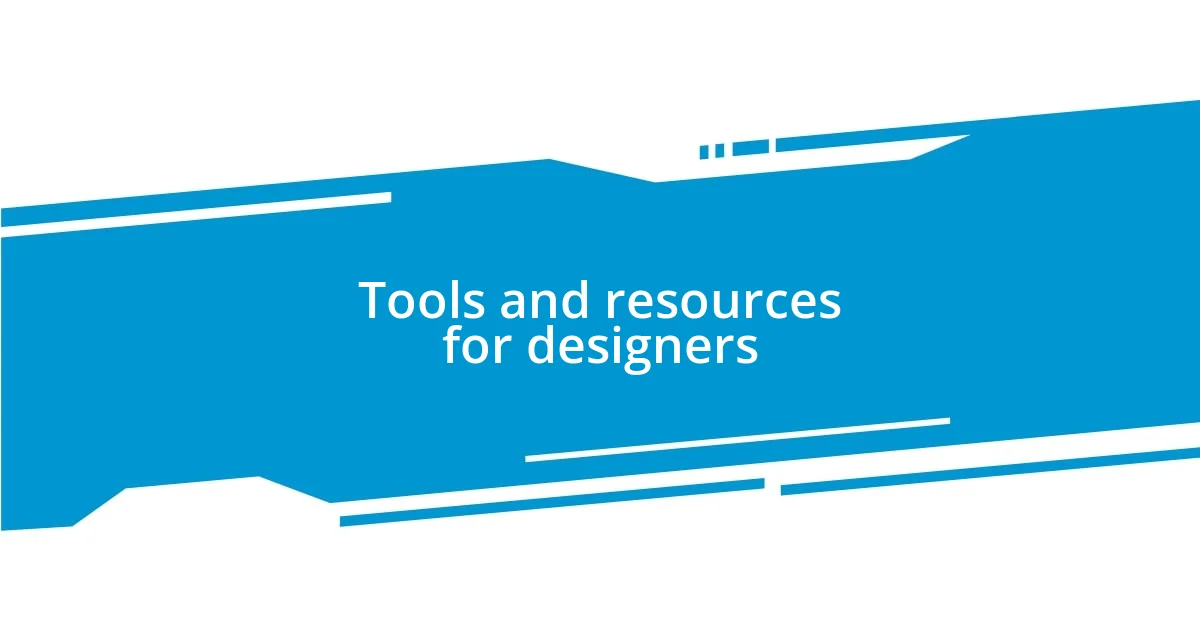
Tools and resources for designers
When it comes to the tools and resources for designers, I must say that having the right ones can significantly influence the creative process. For instance, I swear by Adobe Creative Suite. It’s not just about having access to powerful software; it’s about how each program enhances different aspects of design. I remember diving into Illustrator for a logo project, where the precision it offered allowed me to create something I was truly proud of. Have you ever felt that rush when a tool perfectly aligns with your vision?
Additionally, I find that design communities online are invaluable. Platforms like Behance and Dribbble aren’t just for showcasing work; they’re rich with inspiration and feedback. I recall posting a concept for a brand identity, and the feedback I received helped sharpen my ideas—turning what I thought was already polished into something extraordinary. It’s like having a diverse group of mentors at your fingertips. Have you ever wondered how collaboration could elevate your own projects?
Lastly, never underestimate the power of resources like design books and blogs. They’re treasure troves of knowledge and insights. I often find myself diving into a good design book late at night, only to wake up with a newfound perspective on color theory or typography. One book that changed my approach was “Designing Brand Identity” by Alina Wheeler—it’s a comprehensive guide that helped me reconnect my designs with the emotional elements of branding. Have you considered what knowledge might be lurking in the pages of a book waiting to be uncovered?
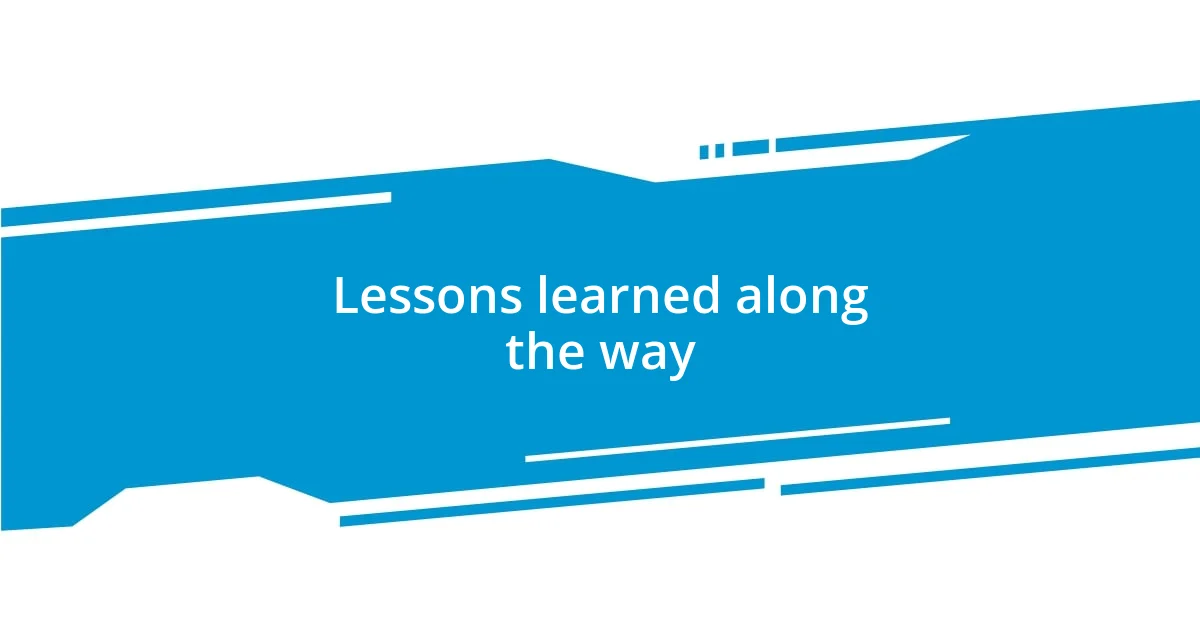
Lessons learned along the way
As I reflect on my journey in brand identity design, one lesson stands out: the power of empathy. There was a time when I jumped straight to creating visuals without truly understanding the client’s story. It was during a project where I took the time to listen and connect with a small business owner that everything shifted. Their passion became my inspiration, guiding my design choices in a way that resonated deeply with their target audience. Have you ever had a moment where simply listening changed the entire outcome of a project?
Another valuable insight came from embracing feedback, which can sometimes feel brutally honest. I remember presenting a design that I was absolutely proud of, only to receive a barrage of critiques. Initially, it stung. However, I soon realized that this feedback was a gift, unveiling blind spots I hadn’t noticed. I took those critiques to heart, revising the design until it shone even brighter. Isn’t it interesting how constructive criticism can lead to personal and professional growth?
Finally, I learned that the design process is not linear; it’s often a winding path filled with surprises. I once found myself working late on a project, feeling stuck and frustrated. In a moment of desperation, I decided to step away and take a walk. As I strolled through the local park, fresh ideas started to flow. That experience taught me the importance of stepping back to gain perspective. Have you encountered a breakthrough after giving yourself a little distance from a creative challenge?










